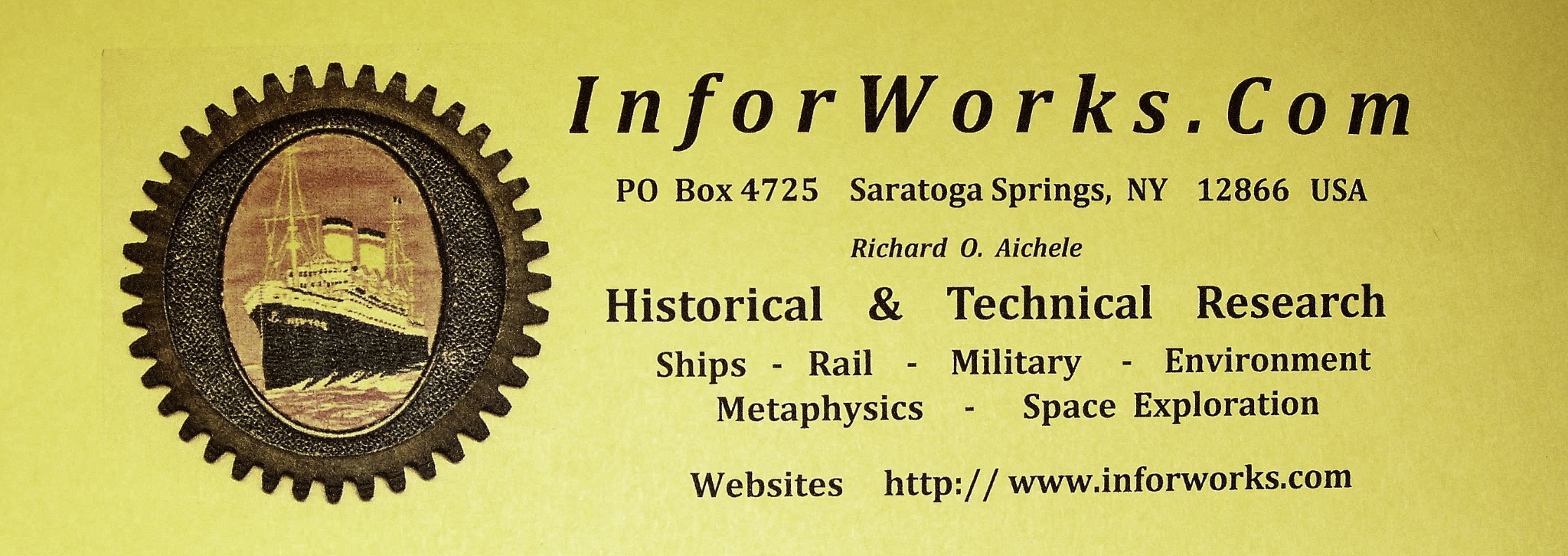
Copyright 2020 by Richard O. Aichele - email rottoa@gmail.com - and InforWorks.com
The Ships and Ocean Liners |
The passenger ships between 1900 and 1939 represented the finest examples of steadily advancing technologies, artistic styles' evolutions from Victorian to Art Deco, and the growth of internatioanl travel that brought people together worldwide. The post World War 2 new ship construction revival was short lived but resulted in several fine new ships. For a century, ocean liners linked the people of the world. |
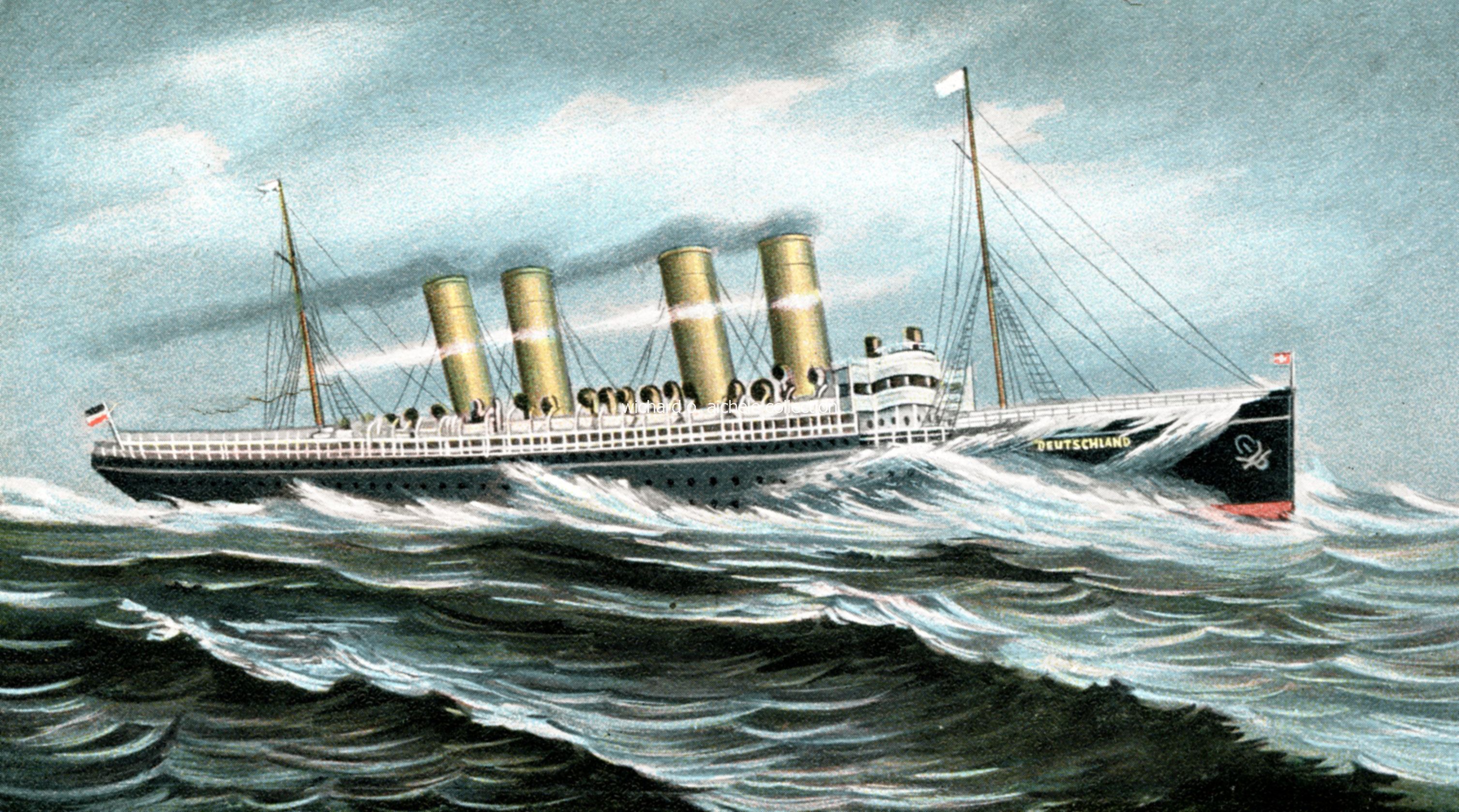
| 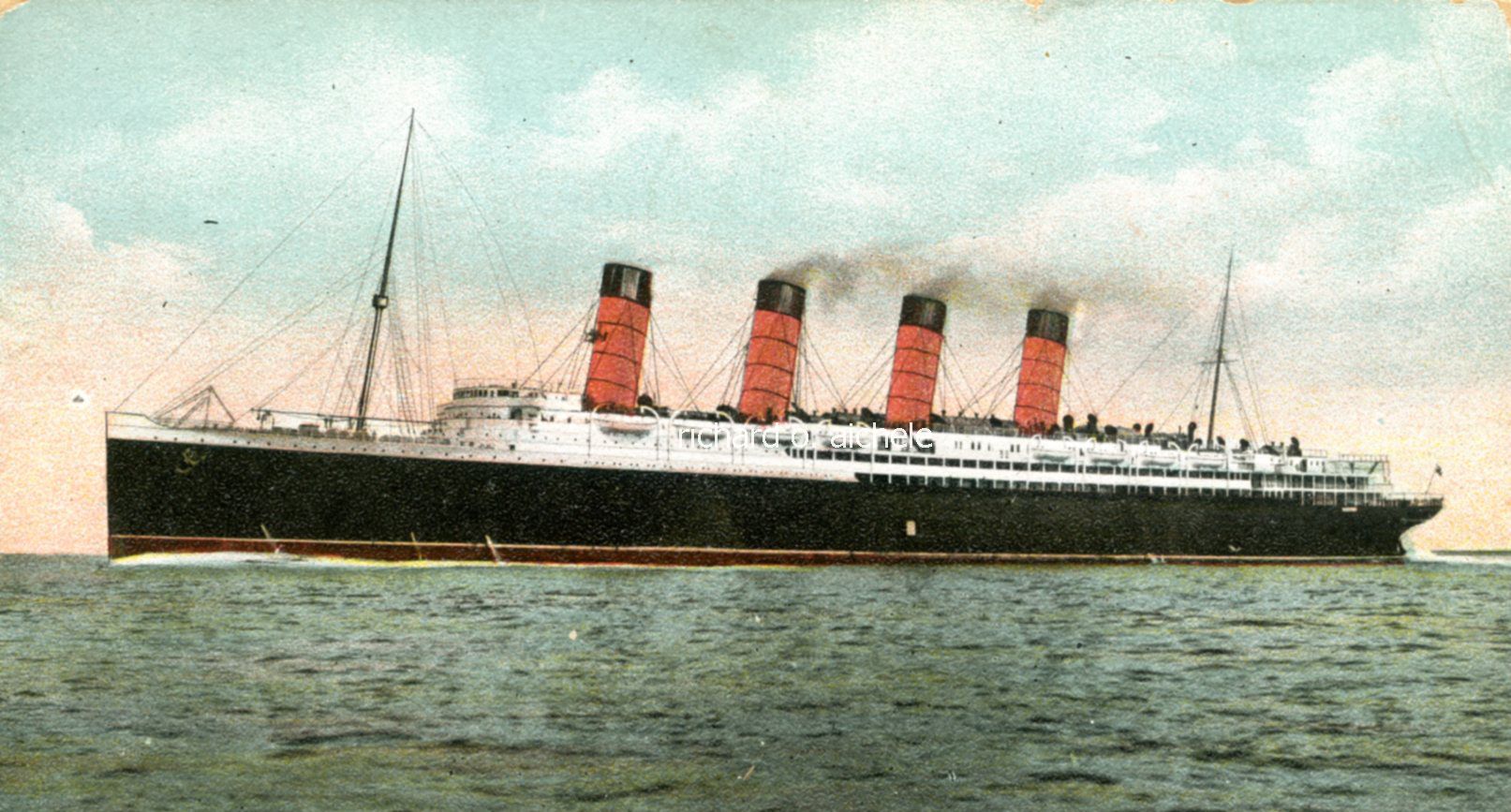 | |
Norddeutscher Lloyd Line S.S. Deutschland | Cunard Line R.M.S, Lusitania |
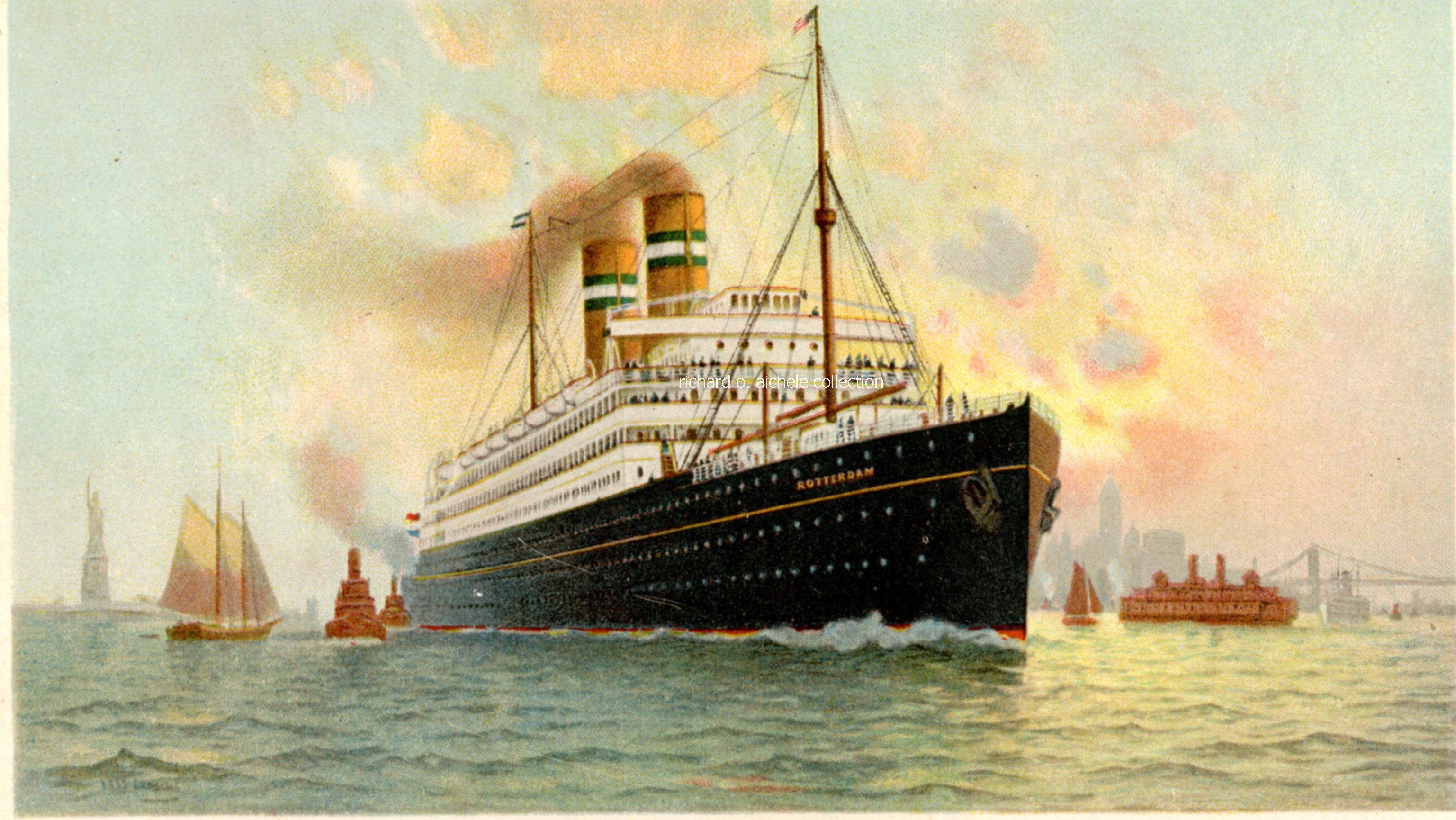
| 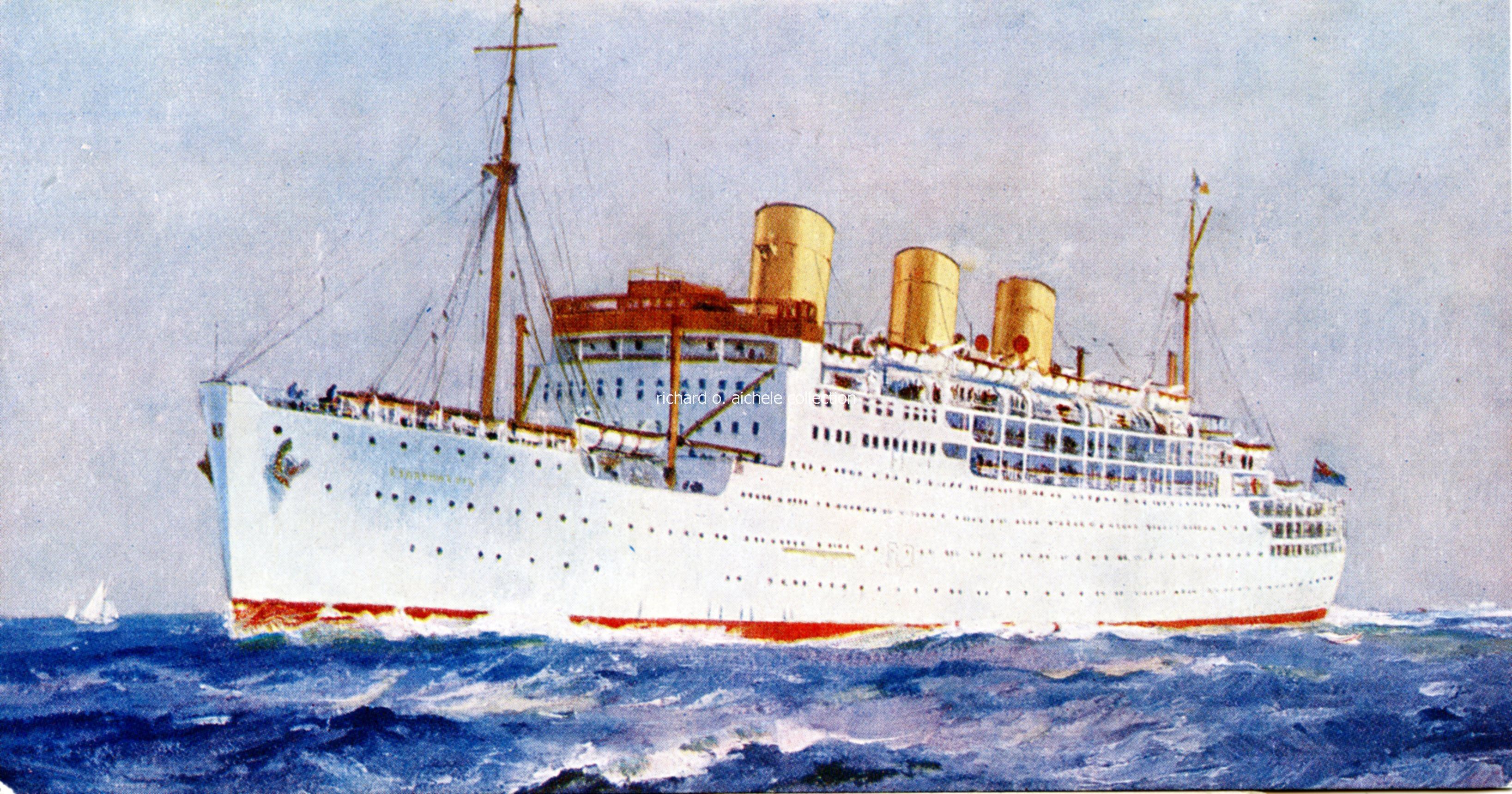 | |
Holland America Line S.S. Rotterdam | P & O Line Electric Ship Strathaird |
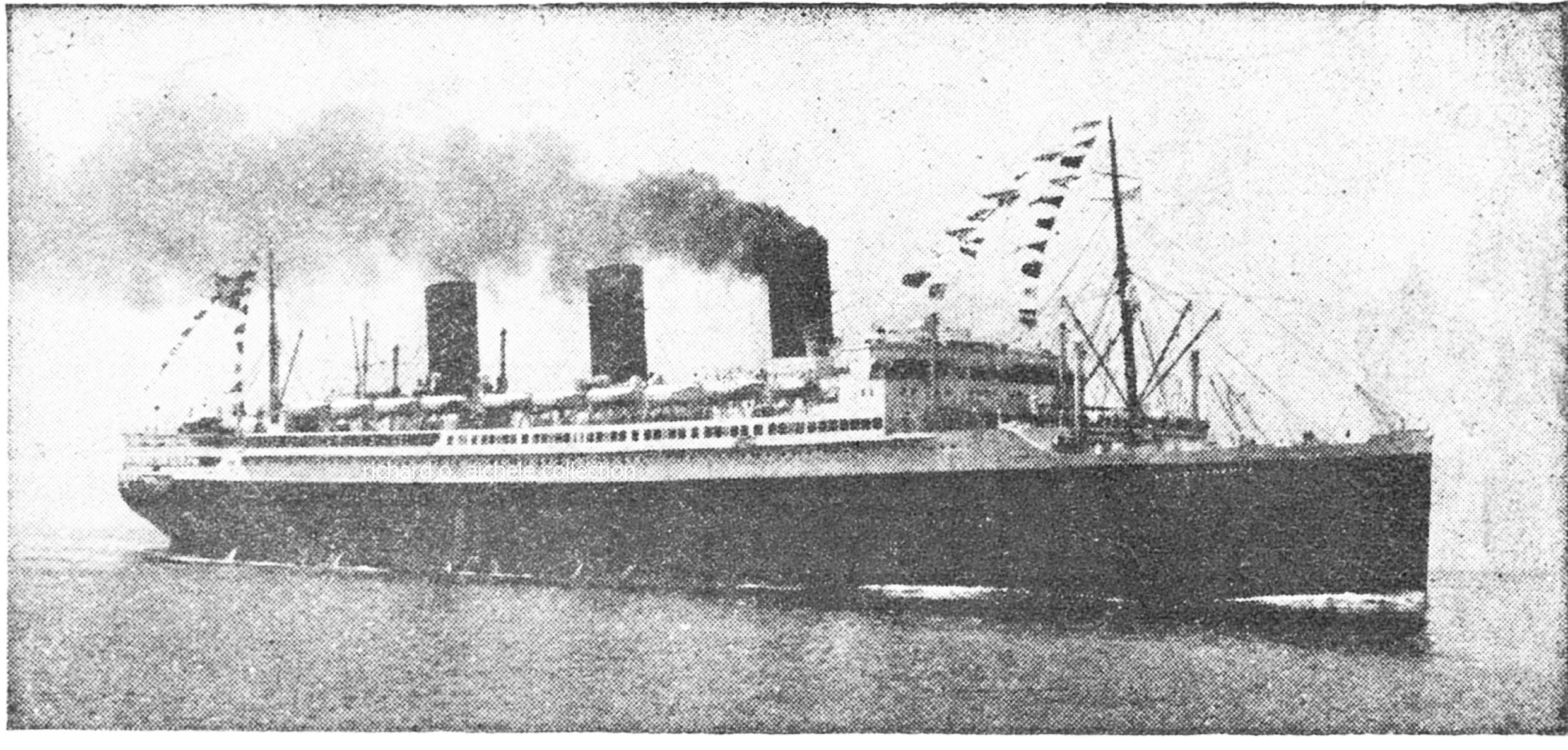
|  | |
French Line S.S. Ile de France | Italian Line S.S. Rex |
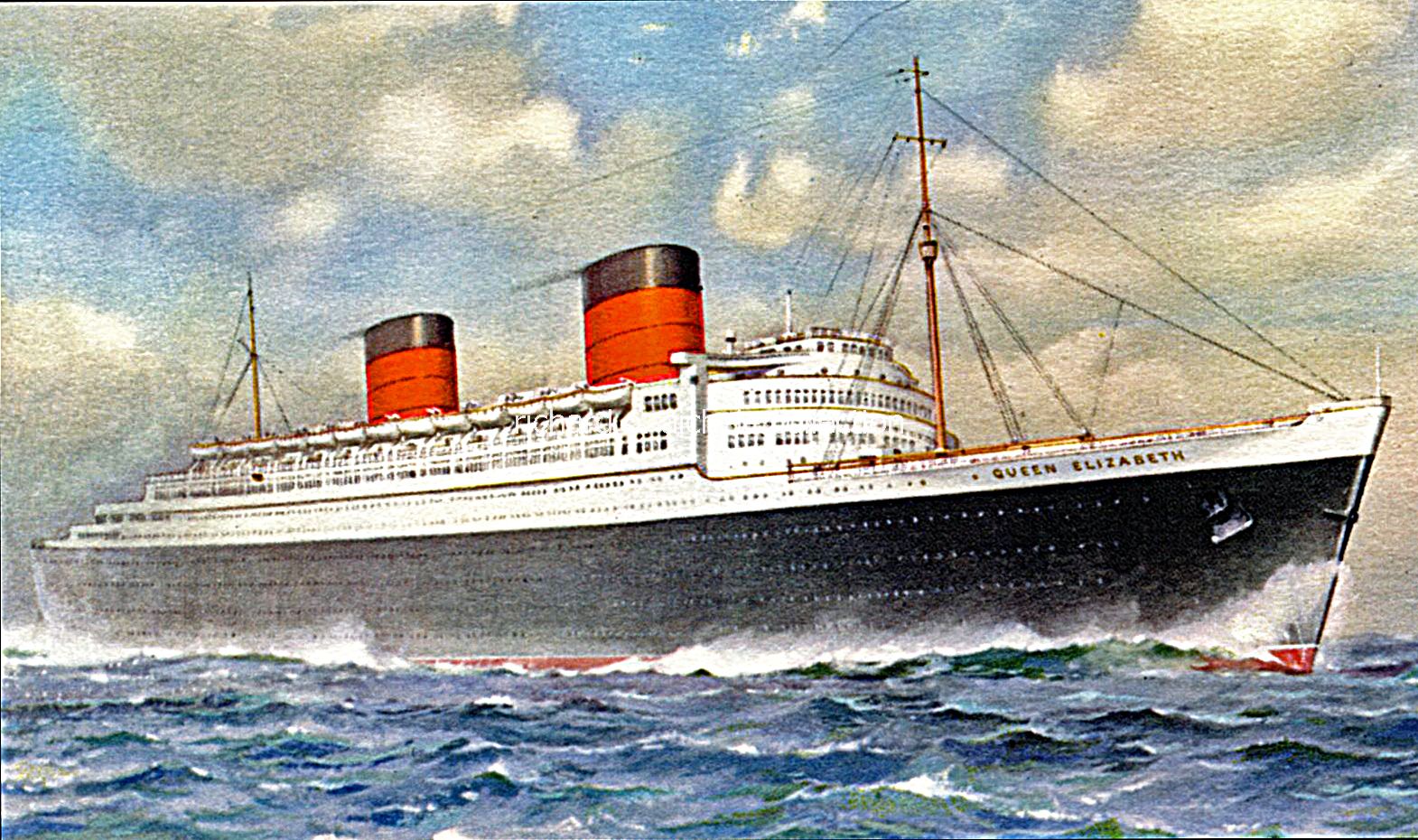
| 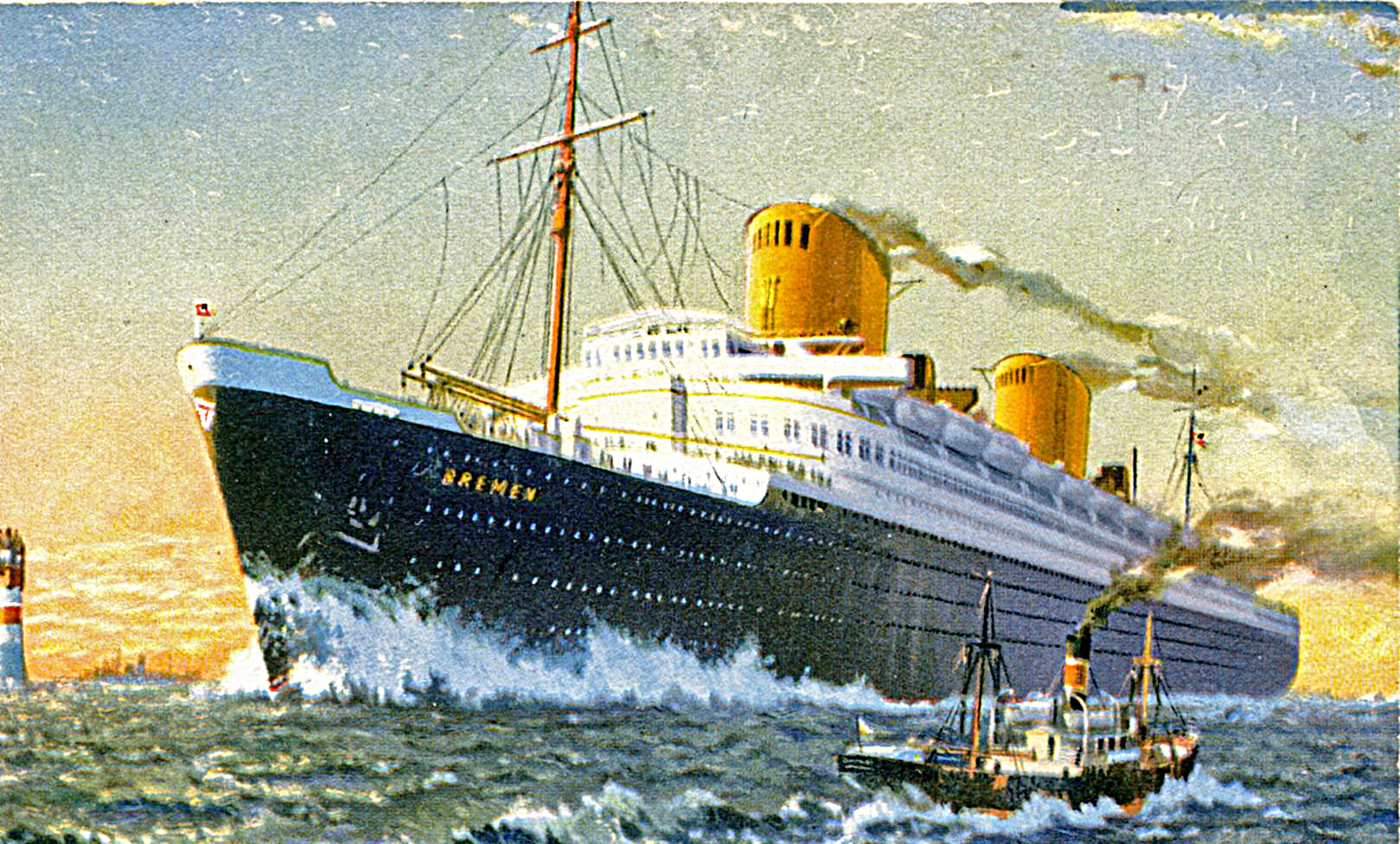 | |
Cunard Line R.M.S. Queen Elizabeth | Norddeutscher Lloyd Line T.S. Bremen |
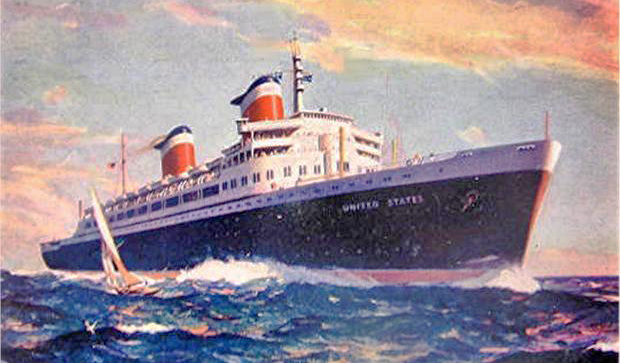
|  | |
United States Line S.S. United States | American Export Lines S.S. Independence |
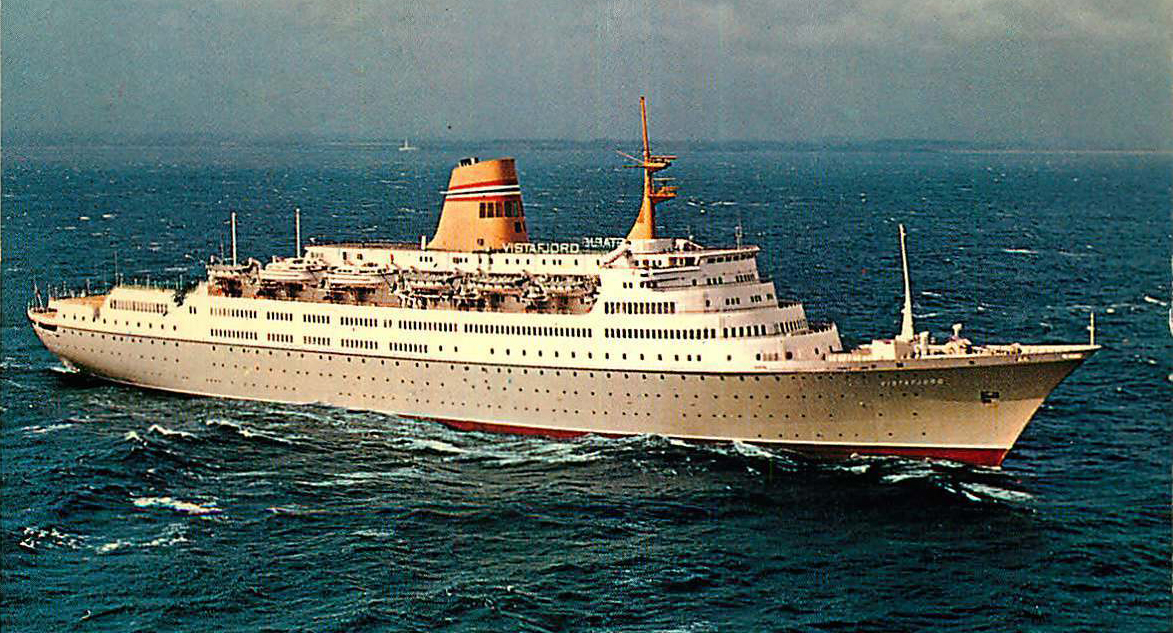
| 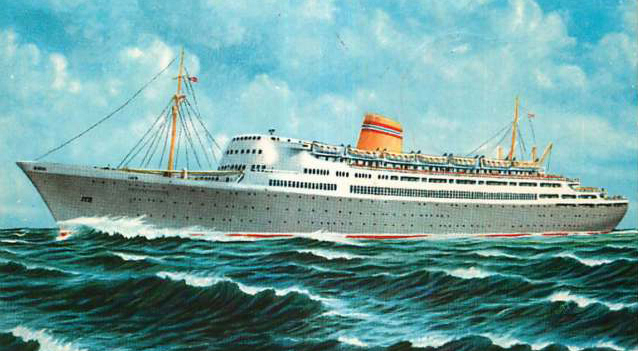 | |
Norwegian America Line S.S. Vistafjord | Norwegian America Line S.S. Bergensfjord |
|
Atlantic Liners in New York City This 1930s aerial photo shows a busy day in the Port of New York. Trans-Atlantic liners docked included United States Line, Cunard White Star, French Line and Italian Line ships. Directly on the other side of the Hudson River in New Jersey were docks of the Norddeutscher Lloyd Line, Norwegian America Line and others.
. . . . . . . |
|
Errors of Judgement Sank This Ship
| |
Hours and days of boredom suddenly interrupted by moments of shear terror. The S.S. Stockholm of the Swedish American Line sailed from New York at 11:50 AM on July 26, 1956 on an eastbound course enroute to Gothenburg, Sweden. At the same time, the S.S. Andrea Doria of the Italian Line was westbound from Genoa, Italy to New York with arrival scheduled for the early morning of July 27, 1956. Under ideal maritime conditions, the schedules and courses of the two ships would have had them passing each other at a combined speed of 40.3 knots about 11:00 PM on July 26 in the vicinity of the Nantucket Lightship. The Nantucket area is known for the blanketing advection fogs that existed that night. The Andrea Doria had sailed west at a 21.5 knot speed with very limited visibility through the fog bank. The Nantucket Lightship was totally enveloped by the fog. The Stockholm was also sailing at near full speed under clear skies because she had not yet encountered the fog ahead. Although the radars on both ships showed the other ship, the heavy fog was the reason the crews on the two ships did not visually see each other and observe how close they were to each other until almost the last moments. On the Stockholm's bridge. Certain in his mind of the position and course of the other ship, Carstens decided he would increase the safety margin for the passing. "Starboard," he called out and the helmsman turned the wheel two complete turns to the right. Carstens watched the Stockholm's bow swing away from the approaching ship...satisfied the ships would pass safely port-to-port. [Then] The lookout stared in disbelief...the other ship was going to cross the bow of the Stockholm. [Minutes later] Carstens saw the enormous broadside of a giant black ship sparkling with lights...the ship was heading across his bow. He saw the glow of the ship's green running light. It was the starboard side of the other vessel. On the Andrea Dorias bridge. "She is turning, she is turning! the young officer screamed. "She is showing the red light!" He gasped for air. She is coming toward us! It was impossible to believe this was happening. The masthead lights were opening. The other ship was turning to her right and heading for the Doria. This was the moment of decision. Captain Calamai called out, "All left. Calamai had decided that it was too late to try to stop the Andrea Doria. His only hope was the Doria speed. He decided that he must outrace the other ship, turning left faster than he could swing her to the rightThen it was too late. Calamai saw the dim outline and then the bow of the other ship as it came out of the night at the Doria. The bridge scenes descriptions above are quoted from the book Collision Course by Alvin Moscow. The two ships collided at 11:11 PM. Immediately after the collision the two ships separated due to the forward momentum of the Andrea Doria. The large hull opening allowed a rush of sea water into the hull of the Andrea Doria leading to a rapid 20 degree list to starboard. That list slowly increased to more than 30 degrees during the night. Alvin Moscow in Collision Course described the crash results: Stockholm bow pierced the five fuel tanks on the starboard side and left intact the port side tanks. The ten fuel tanks near the end of the voyage had been empty. The penetration allowed some 500 tons of sea water to gush into the starboard tanks providing that much dead weight on one side of the ship. While the air filled port tanks rose out of the sea like a balloon. The more the ship listed to starboard, the more hundreds and thousands of tons of sea water poured into the 40 foot hole in the side of the Andrea Doria." The rapid list also resulted in making all the lifeboats on the port side useless. Without the rapid assistance of other ships especially the French Line's Ile de France there would have been many casualties.
The design and construction of the Andrea Doria met all maritime standards when launched in 1951. The affects of some design factors did effect normal sailing operations. Alvin Moscow in Collision Course explained: "The Andrea Doria rolled considerably In the eight day crossing. The huge ship had expended some 40,000 tons of fuel oil and fresh water which served as ballast in the bottom of the hull. Like most modern passenger liners, she was top heavy especially at the end of her voyages because of her large superstructure needed to provide public rooms and recreation space in comparison to the shape and weight of the hull underwater."
For additional technical details, also refer to this source: http://www.titanicology.com/AndreaDoria/Stockholm-Andrea_Doria_Collision_Analysis.pdf The Objective Forensic Analysis of the Collision Between Stockholm and Andrea Doria by Samuel Halpern.
The final hours for the Andrea Doria. All the port side lifeboats were still in their davits and could not be launched due to the ship's rapid list to starboard. The Stockholm with its bow destroyed but flooding stabilized remained nearby as part of the rescue. |
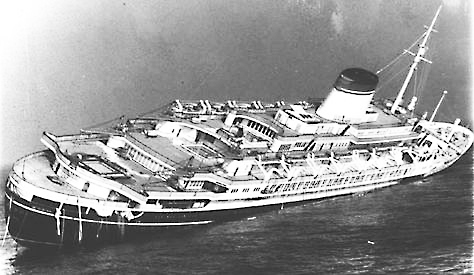
| 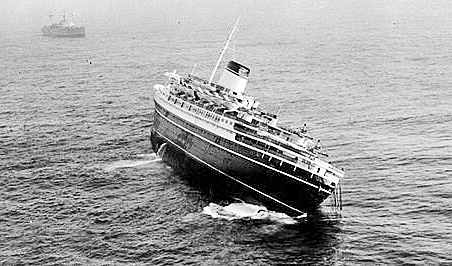 |
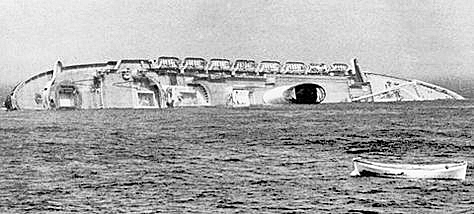
| 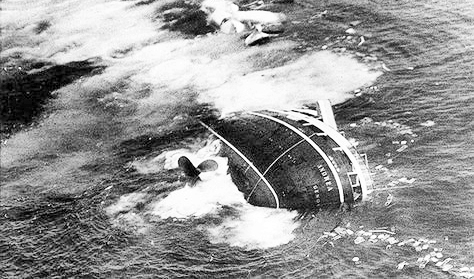 |
Classic Era Passenger Ocean Liners
French Line's S.S. Normandie
H.M.S. Queen Mary The H.M.S. Queen Mary entered service in 1936. Construction of the 1,020 foot long, 81,237 gross tonnage ship began in 1930 and the inaugural voyage from Southampton to New York began on May 27, 1936. She was the first major British passenger ship built since 1914. The H.M.S. Queen Mary faced trans-Atlantic passenger liner competition from newer ships especially German liners incuding the T.S. Europa and the T.S. Bremen, the French Line especially its S.S. Normandie and the Italian liners including the S.S. Rex and the S. S. Conte di Savoia.
The H.M.S. Queen Mary completed its 1,000 trans-Atlantic voyage in 1967. Fortunately, unlike the other great liners, she was saved from being scrapped by a plan of Long Beach, California to make the H.M.S. Queen Mary a museum. The final voyage from Southampton with 1,093 passengers and 806 crew required sailing westward to California by way of Cape Horn, South America and was completed on December 9, 1967. Click for Enlarged Queen Mary Diagram
S. S. Nieuw Amsterdam
The philosophies behind the design and construction of this liner were outlined by the Holland-America Line's Board of Directors in 1938: "Twenty or more years of service lie ahead of a new ship. It's construction, therefore, is a continuous confrontation of the present and the future. Every ship offers a temporary solution of this permanent problem. And although shipping is as international as the ocean by which it lives, every ship reflects national qualities in addition to a period in construction. The Nieuw Amsterdam is such a solution of 1938 and bears the mark of the Netherlands." Completed by the Holland-America Line in May, 1938 for the North Atlantic trade, the S.S. Nieuw Amsterdam was one of the last vessels built with "old world" tastes in interior decor and comforts. The ship's trans-Atlantic career was cut short by the outbreak of World War II during which she was taken over by the British government, converted to carry thousands of troops and operated by the British as a troop transport. Following the war and after extensive refitting and restoration, the Nieuw Amsterdam embarked on a long and successful career as a passenger liner in both regular trans-Atlantic crossings and seasonal cruise service. Traditional decor was present in shipboard areas such as The Grand Hall
Considerable advances will also be noted in the interior decorations. "Modern architectural ideas supplemented by individual works of art of the
younger generation of artists have created interiors of distinct originality and
beauty. Although individually the artists' visions and execution may vary, we
believe that a symphonic whole has been achieved and this ship belongs to
the future," A statement from the ship's introductory publication.
A statement from S.S. Nieuw Amsterdam introductory publication.
Art-Deco styles such as the Cabin Class bar were wonderfully done. Art-Deco was also selected for the Main Deck's Reception Vestibule A large oxidized copper panel called The Four Season located in the well of the main deck vestibule included Autumn. One of the four bronzes were by Jan Eloy and Leo Brom |
The Engine Room machinery of the Nieuw Amsterdam included eight steam tubines, single reduction geared that gave the twin propeller ship a cruising speed of 21.50 knots.
Revival of the Atlantic's Passenger Liners The year was 1948. World War 2 had ended in 1945. Pre-war ships were restored from troop ship uses to their beautiful ocean liner interiors once again. New Atlantic liners were being built primarily by European ship lines. The new fleets were carrying up to 27,000 passengers each month in 1948. Competition from the airlines was beginning but flights between New York and Europe were lengthy usually including refueling stops at Gander, Newfoundland and Shannon, Ireland. Any of the Atlantic liners offered greater comfort and the Cunard Line's suggestion that "Getting there is half the fun" appealed to thousands of new travelers. The ocean travel varieties of cost, types of accommodations, destination ports and just the variety of on-board services from different nations made The Atlantic Fleet popular.
Click for the Enlarged Atlantic Fleet Drawings . . . . . . . . . . |
History of the Classic Passenger Ocean Liners
Trans-Atlantic Liners in Ports Before 1914
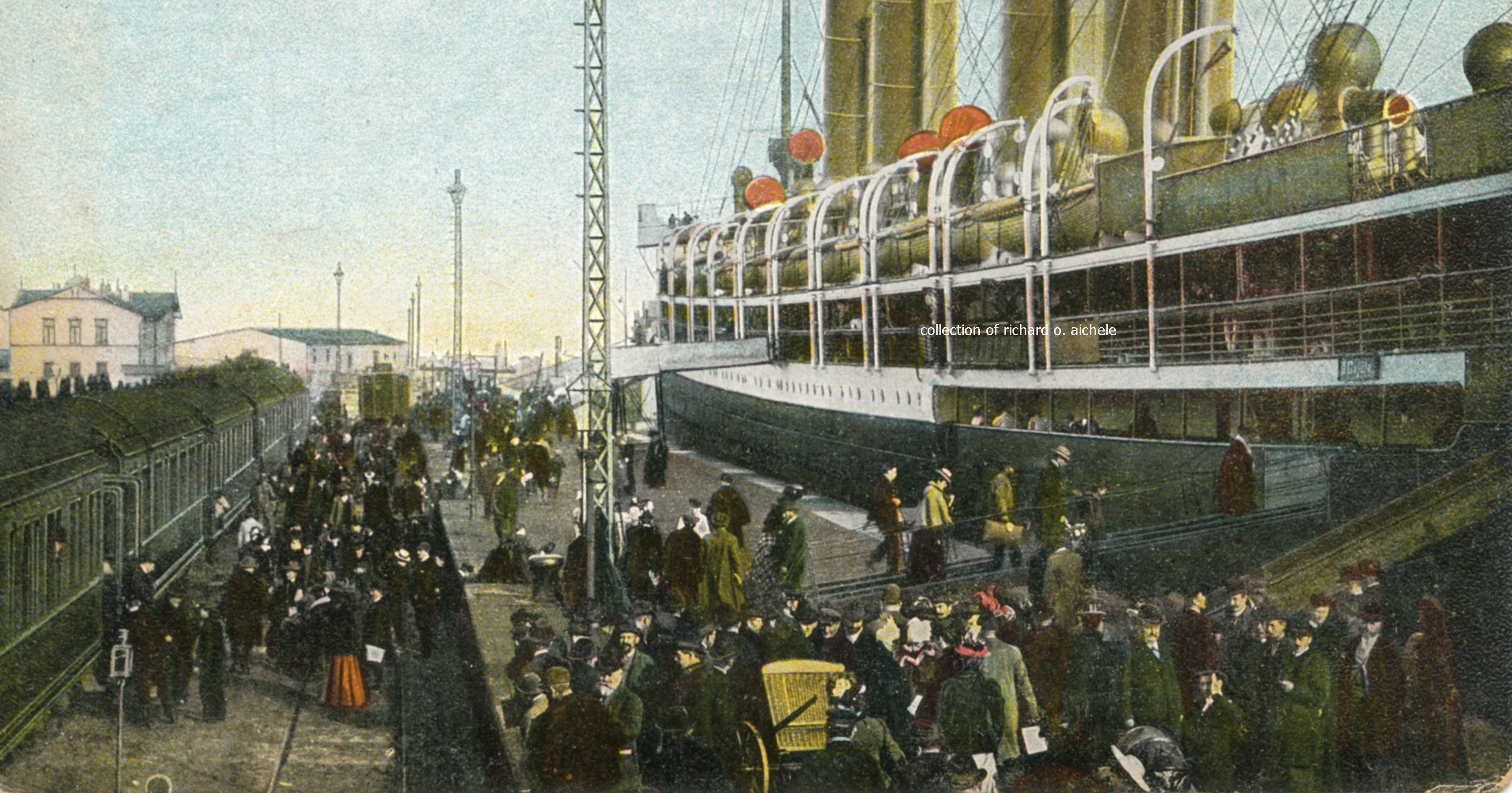
| 
| 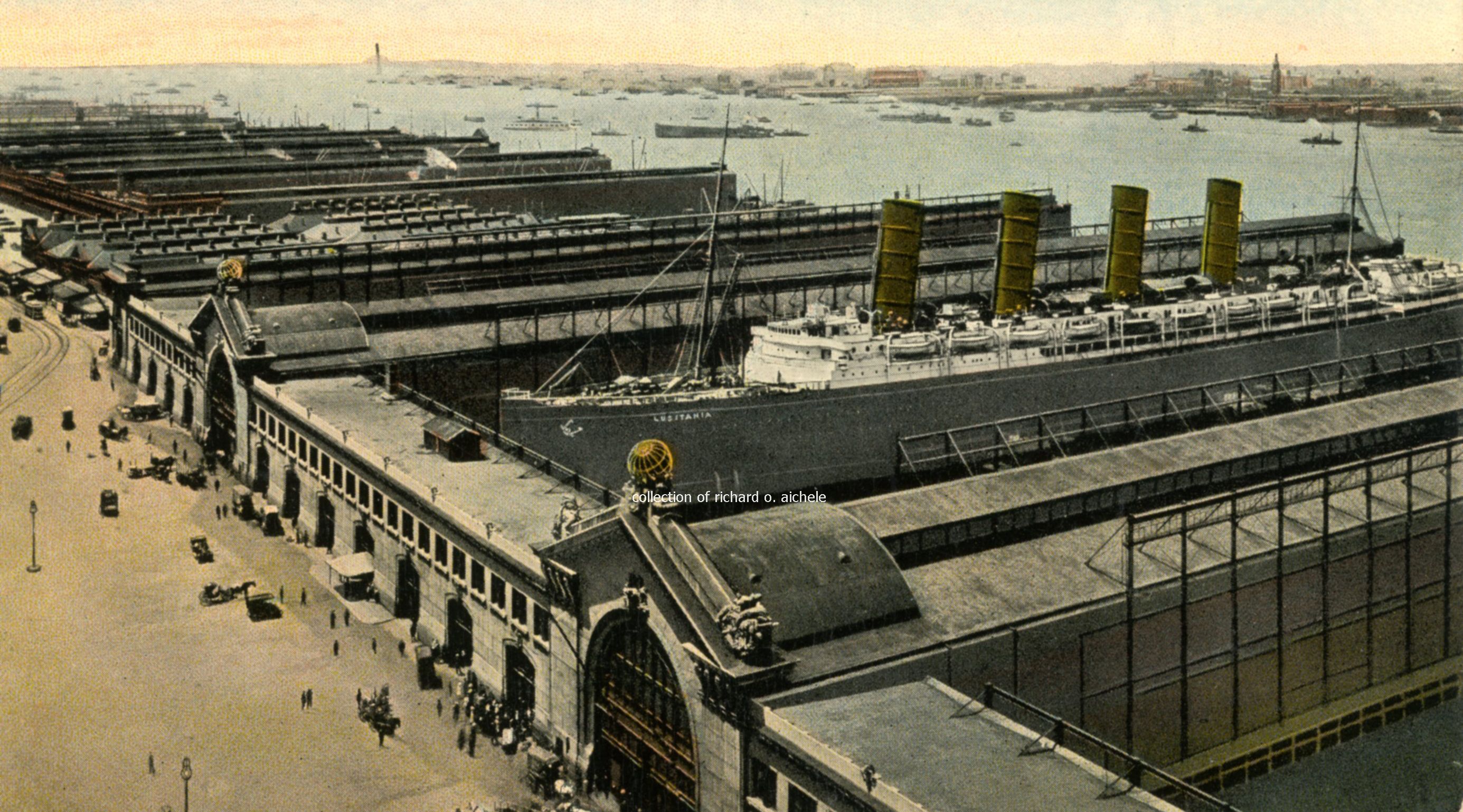 | |
Kronprinzessin Cecilie at Hamburg, Germany | Kaiser Wilhelm II at Hoboken, NJ USA | Lusitania at Pier 54 in New York City |
S.S. Amerika Setting Higher Standards The ship set a new standard of excellence for ocean travel when it sailed from Hamburg, Germany on the maiden voyage to New York on Oct. 1, 1905. Owned by the Hamburg-Amerika Linie, the new ship was designed to attract passengers with unmatched luxury and superior service without attempting to make any speed records.
The S. S. Amerika sailing from the Hamburg-Amerika Linie's Hoboken, New Jersey piers in the Port of New York.
Afternoon tea served promptly at 4:00 PM was a tradition at sea aboard the trans-Atlantic liners. Here on the Amerika's Promenade Deck, attentive stewards served tea, cakes and small sandwiches to the passengers on the Promenade Deck.
. . . . . . . . . .
The Era of the Liners Faded With Style
|
. . . . . . . . R. M. S. TITANIC The Unsinkable Steamship - Lessons Learned
The White Star Lines R.M.S. Titanic according to testimony at one of the accident investigation hearings determined the ship was designed for a full speed of 22 to 23 knots based on propulsion revolutions of 78 at full sped. At the time of striking the iceberg revolutions were "not more than 72" or in ship speed was at the rate of about 21 knots." Russell explained, " If the Titanic was not as fast a ship as the Lusitania or Maurtetania she was expected to make a good record on her maiden voyage which could not be done unless she held to a prescribed route. It was certainly in the power of Mr. Ismay to have the Titanic's course changed to the southwhen dangerous ice was reported ahead. The warning had come by wireless from the Amerika the day before the disaster." However, on the ship's maiden voyage from Southamton, England to New York City during the night of April 11 - 12 the ship was "steaming almost full tilt through a gently swelling sea and under a starlit sky. The great liner was plunging through a comparitively placid sea on the surface of which there was much mushy ice and here and there a number of comparitively harnless looking floes. The first intimation of the presence of the iceberg that Chief Officer Murdock received was from the lookout in the crow's nest. They were so close upon he berg at this moment that it was practically impossible to avoid a collision with it." Russell wrote, "The first officer did what other unstartled and alert commanders would have done under similar circumstances -- that is, he made the effort by going full speed ahead on his starboard propeller and reversing his port propeller, simultaneously throwing his helm over to make a rapid turn and clear the iceberg. The maneuvers were not successful. He succeeded in preventing his bow from crashing into the ice cliff but nearly he entire length of the great ship on the starboard side was ripped. The speed of the Titanic, estimated to be at least twenty-one knots, was so terrific that the knifelike edge of the iceberg's spur protruding under the sea cut through her like a can opener. The shock was almost imperceptable. The first officer did not apparently realize that the ship had received its death wound." Deep within the bowels of the Titanic, the stability of the ship was being compomised another on-going event unknown to the passengers. A fire was ongoing in two of the coal bunkers holding hundreds of tons of coal for the ship's boilers. The fire started in one of the coal bunkers either just before sailing or just after the ship left the Southampton pier enroute to New York City. Coal loaded earlier was at the bottom of the bunker and had become dry. It was then covered with wet coal "as all the coal should have been" according to one fireman. Heat generated in the dry coal by spontaneous combustion caused an intially smoldering fire. However, the fireman recalled, "The wet coal on top kept the flames from coming through but down in the bottom of the bunker, sir, the flames was a-raging." According to Russell as told by another fireman to combat the fire during the voyage, "it had been necessary to take the coal out of sections 2 and 3 on the starboard side, forward, and when the water came rushing in after the collision with the ice the bulkheads would not hold because they did not have the supporting weight of the coal. Somebody reported to Chief Engineer Bell that the forward bulkhead had given way and the engineer replied: 'My God, we are lost.' The engineers stayed by the pumps and went down with the ship. The foremen and stokers were sent on deck five minutes before the Titanic sank, when it was seen that they would be inevitably lost if they stayed longer at their work of trying to keep the fires in the boilers and the pumps at work. The lights burned to the last because the dynamos were run by oil engines." One survivor's account from a lifeboat: "In the distance it looked an enormous length, it's great bulk outlined in black against the starry sky, every porthole and every saloon blazing with light. It was impossiblt to think anything could be wrong withy such a leviathan were it not for the ominous tilt downward at the bow, where the water was by now up to the lowest row of portholes.Presently about 2 A.M. as near as I can remember, we observed it settling very rapidly, with the bow and bridge completely under water, and concluding it was now only a question of minutes before it went; and so it proved. it slowly tilted straight on end, with the stern vertically upward, and as it did, the lights in the canins and saloons, which had not flickered for a moment since we left, died out, cameon again for a singke flash and finally went out altogether. To our amazement the Titanic remained in that upright position, bow down, for a time which I estimate as five minutes, while we watched at least 150 feet of the Titanic towering above the level of the sea and looming black against the sky. Then the ship dived beneath the waters." Following the Titanic disaster with 1,517 lives lost, the public from immigrants to the wealthy were cautious about the trans-Atlantic liners image. Tom Hughes in his book, The Blue Riband of the Atlantic noted, "The sinking of the Titanic on her maiden voyage in April 1912 inevitably led to a reaction among nervous section of the regular transatlantic travelling public against 'large and fast liners' and for a time passenger carryings in the Lusitania and Mautetania were lower than usual....the public had temporarily lost faith in speed at sea -- particularly on the North Atlantic run."
Photos show Titanic life boats next to or approaching the rescue ship S.S. Carpathia.
American Coastal Passenger Ships The first half of the Twentieth Century saw U.S. ports of all sizes served by a thriving maritime trade conducted primarily with U.S. built and U.S. flagged coastal vessels from fast passenger inter-city ships to small, plodding freighters.
S. S. Dixie "One of the Staunchest Vessels"
Aboard the Dixie, first, second and third class passengers could enjoy handsomely decorated and luxurious" cabins in an American colonial design. Other amenities included hot and cold running water plus hot and cold fresh and salt water in all baths, cabins heated by electro-vapor radiators, a telephone system, barber shop, sun parlor, dance room, dining saloon and a lounge. The ship was equipped with the latest navigation devices. "The radio direction finder, installed in the pilot house, enables accurate radio-bearings to be taken on special beacon stations established by the U.S. Government Bureau of Lighthouses or on any radio shore station of ship. Bearings may be taken with this instrument at a distance of several hundred miles." Equipment also included a Sperry Gyro Compass and Sperry Gyro Pilot. "The Sperry Gyro Pilot, known to seamen as 'Metal Mike,' provides a perfect and reliable mechanical method of steering, a simple contact mechanism guided by the Gyro Compass being utilized to control the movements of the ship's steering wheel." The ship's keel was laid January 31, 1927 at the Federal Shipbuilding & Dry Dock Company in Kearny, N.J.and the vessel was launched July 29, 1927. The 12,440 ton, 445 ft. long passenger and cargo vessel was "acclaimed as one of the staunchest vessels ever turned out of a shipyard." Built as an oil-burning vessel, the steam turbine propulsion connected to the single propeller could drive the ship at a speed of 16.5 knots. The S.S. Dixie was sold to the U.S. Navy in 1940 and converted to a tender to provide a mobile base and repair facility supplying fuel, ammunition and stores to destroyers and destroyer escorts. She was scrapped in Baltimore in 1950.
S. S. Momus
S.S. Yale and S.S. Harvard
Passenger vessel travel between Boston and New York took a major step forward with the beginning of regular service by the steamers S.S. Yale and S.S. Harvard on September 18, 1907. The Yale was the first of the two ships completed and she made her first trip from New York to Boston in June in just under 14 hours.
Interior appointments were plush. The overnight passengers were accommodated in staterooms on the two lower passenger decks. Outside cabins opened onto promenade decks along each side of the ship while inside cabins were accessed from passageways. There were also 22 luxury cabins on a forward upper deck. According to one published account at the time, "In the matter of interior decoration and fittings the ships strike a new note, and it is safe to say that in no American steamer yet built has there been so elaborate and beautiful a scheme of embellishment incorporated in the design." Their modern appearance with high bow and twin smokestacks racked back, the fine interiors and the judicious selection of their names all combined to make the two high speed ships extremely popular and profitable on the Boston - New York route. In good weather or fog, the steamers consistently maintained the fast schedule. They normally ran full during the long summer season and never lacked for passengers the remainder of the year. |
Information Works Inc. Transportation - Ships - Trains - Infrastructure Steamboats on America's Rivers and Lakes Europe's Railroad Steam Passes High Speed Rail - Very Fast and Comfortable The First New York City Railroad Tunnels Under the Hudson River Click to return to -INFORWORKS.COM -homepage Article Copyright 2021. All rights reserved by Richard O. Aichele and InforWorks.com, Saratoga Springs, NY 12866 USA
. . . . . . . |